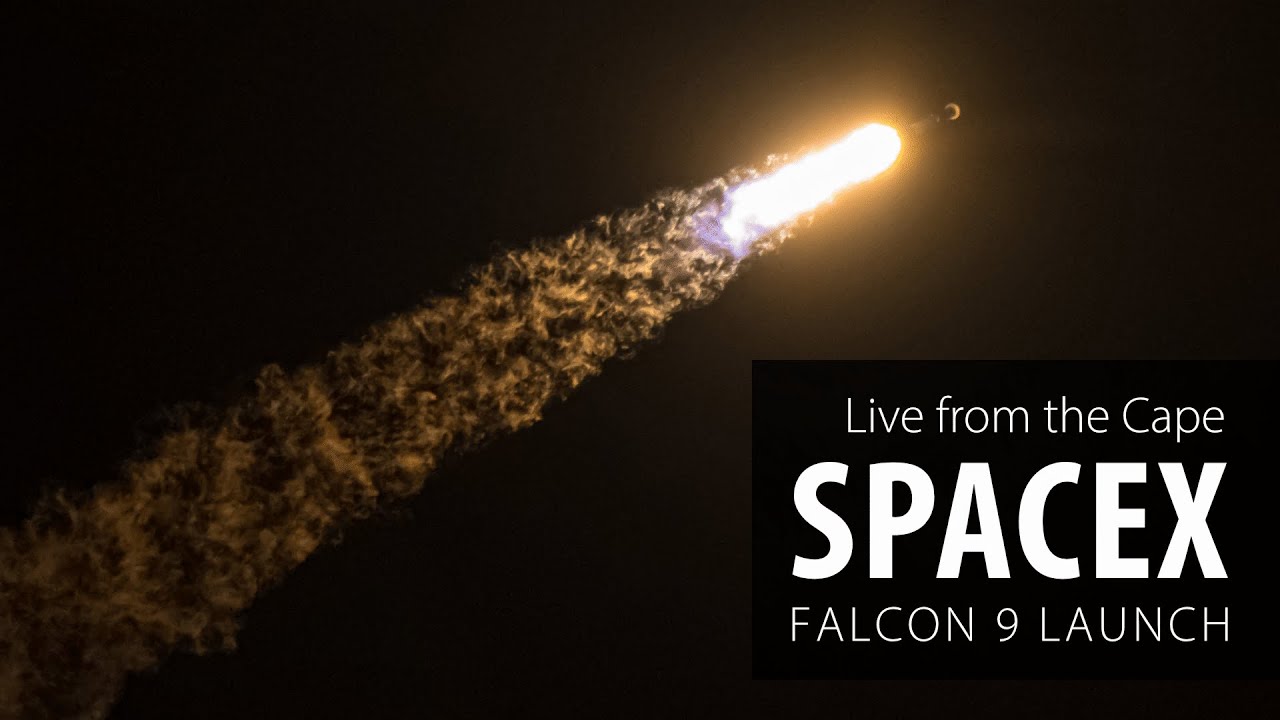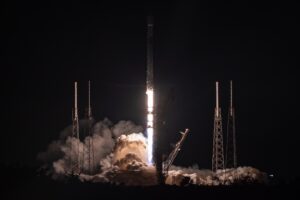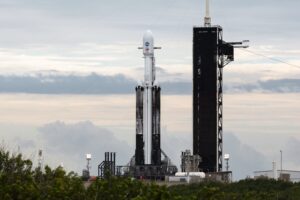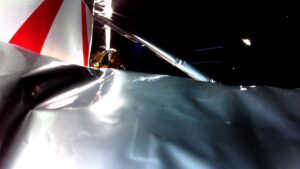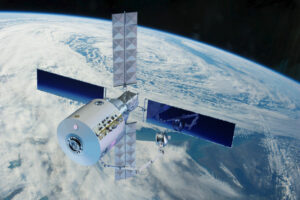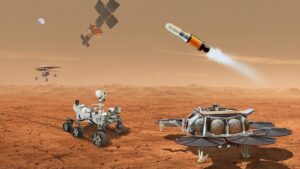[embedded content]
SpaceX is planning a Falcon 9 launch from Cape Canaveral Monday night after high winds kept the rocket grounded last week. Liftoff of the Falcon 9 with 23 Starlink satellites is scheduled for 11:01 p.m. EST (0401 UTC).
U.S. Space Force meteorologists at the 45th Weather squadron said Sunday there was an 60-percent chance of acceptable weather for the Falcon 9 launch, with liftoff winds being the main concern. SpaceX was also keeping a watch on sea conditions in the booster recovery zone. Blustery weather scrubbed a launch attempt last Tuesday and high seas in the recovery zone forced further delays for this mission.
Spaceflight Now’s live coverage of the launch will get underway about an hour before liftoff. You can also watch 24-7 views of launch pads at the Cape in our Launch Pad Live stream.
The Falcon 9 booster for Monday’s Starlink 6-34 mission, tail number B1081, is making its third flight. It previously flew two missions for NASA carrying Dragon Endurance in August with a four-member crew for the International Space Station and a Cargo Dragon on a space station resupply mission 32 days ago in November.
After lifting off from pad 40 at Cape Canaveral, the Falcon 9 will head south-easterly targeting an orbit inclined 43 degrees to the Equator. It’s nine Merlin 1D engines will fire for nearly two and a half minutes before the first stage separates from the second stage. The first-stage booster will continue downrange to land on the drone ship ‘A Shortfall of Gravitas’ in the Atlantic Ocean, east of the Bahamas.
The rocket’s payload fairing halves will land on parachutes a little further downrange from the drone ship and be scooped up by the support ship ‘Bob’, named after Crew Dragon Demo-2 astronaut Bob Behnken.
Meanwhile the single vacuum Merlin engine of the second stage will fire for about six-minutes to reach a parking orbit. After coasting for about 45 minutes, the second-stage engine will re-ignite for a three-second burn to refine the orbit. Deployment of the 23 V2 Mini Starlink satellites will follow at about one hour and five minutes after launch.
- SEO Powered Content & PR Distribution. Get Amplified Today.
- PlatoData.Network Vertical Generative Ai. Empower Yourself. Access Here.
- PlatoAiStream. Web3 Intelligence. Knowledge Amplified. Access Here.
- PlatoESG. Carbon, CleanTech, Energy, Environment, Solar, Waste Management. Access Here.
- PlatoHealth. Biotech and Clinical Trials Intelligence. Access Here.
- Source: https://spaceflightnow.com/2023/12/19/live-coverage-space-x-falcon-9-rocket-to-launch-23-starlink-satellites-from-cape-canaveral/
- :is
- ][p
- $UP
- 01
- 11
- 23
- 32
- 40
- 43
- 678
- 9
- a
- About
- acceptable
- After
- ago
- also
- an
- and
- astronaut
- At
- attempt
- AUGUST
- Bahamas
- BE
- before
- being
- bob
- booster
- burn
- by
- CAN
- cape
- Cargo
- carrying
- Chance
- Concern
- conditions
- content
- continue
- coverage
- crew
- Days
- delays
- deployment
- Dragon
- drone
- East
- embedded
- Engine
- Engines
- falcon
- Falcon 9
- Fire
- First
- five
- flight
- follow
- For
- Force
- from
- further
- get
- Half
- head
- High
- hour
- HTTPS
- in
- Inclined
- International
- international space station
- IT
- ITS
- keeping
- kept
- Land
- Last
- launch
- lifting
- little
- live
- Main
- Making
- merlin
- minutes
- Mission
- missions
- Monday
- Named
- Nasa
- nearly
- night
- nine
- November
- number
- ocean
- of
- off
- on
- ONE
- Orbit
- our
- pad
- parking
- planning
- plato
- Plato Data Intelligence
- PlatoData
- player
- previously
- reach
- recovery
- refine
- rocket
- s
- Said
- satellites
- scheduled
- SEA
- Second
- ship
- shortfall
- single
- Space
- Space Force
- space station
- SpaceX
- Stage
- starlink
- station
- stream
- sunday
- support
- targeting
- The
- The Bahamas
- There.
- Third
- this
- to
- Tuesday
- two
- Underway
- UTC
- Vacuum
- Video
- views
- was
- Watch
- Weather
- week
- will
- winds
- with
- X
- you
- youtube
- zephyrnet

